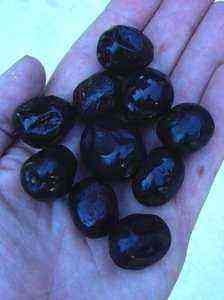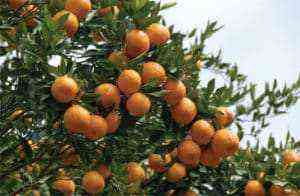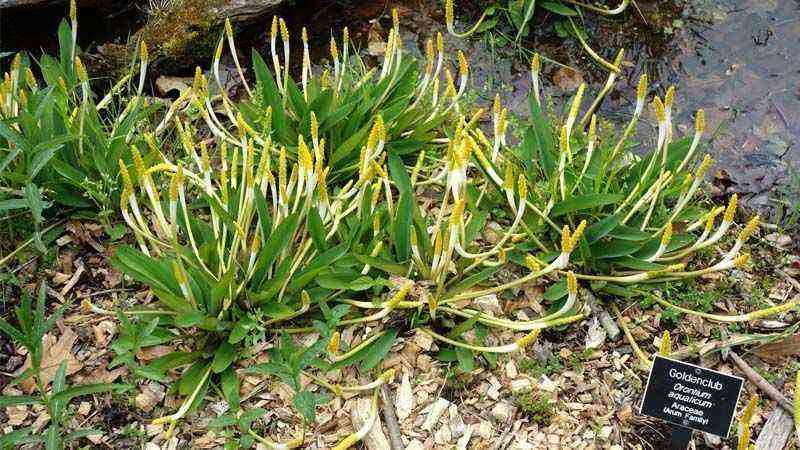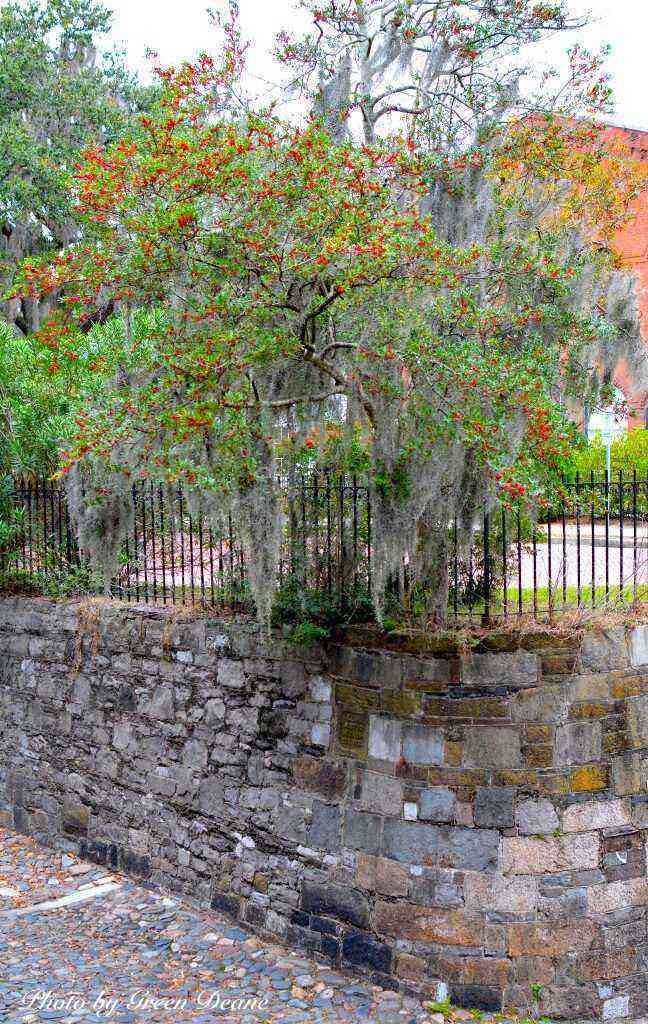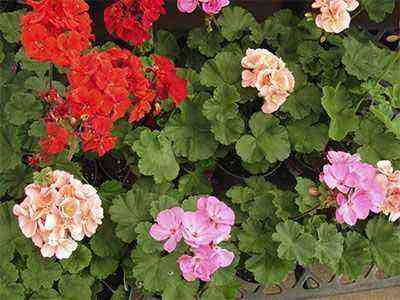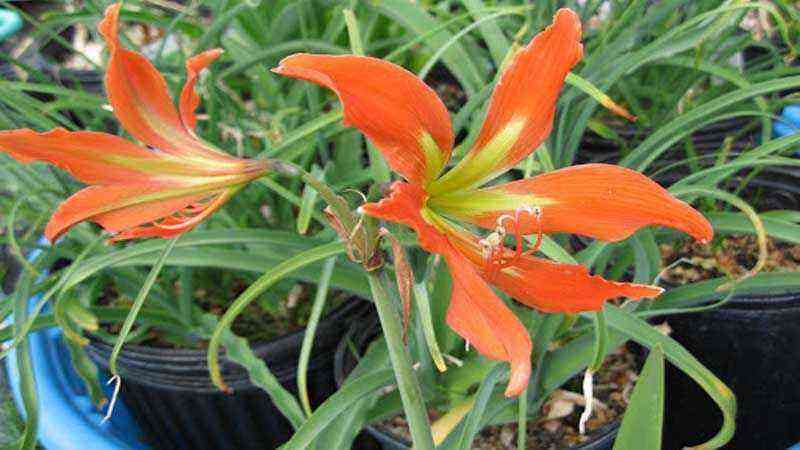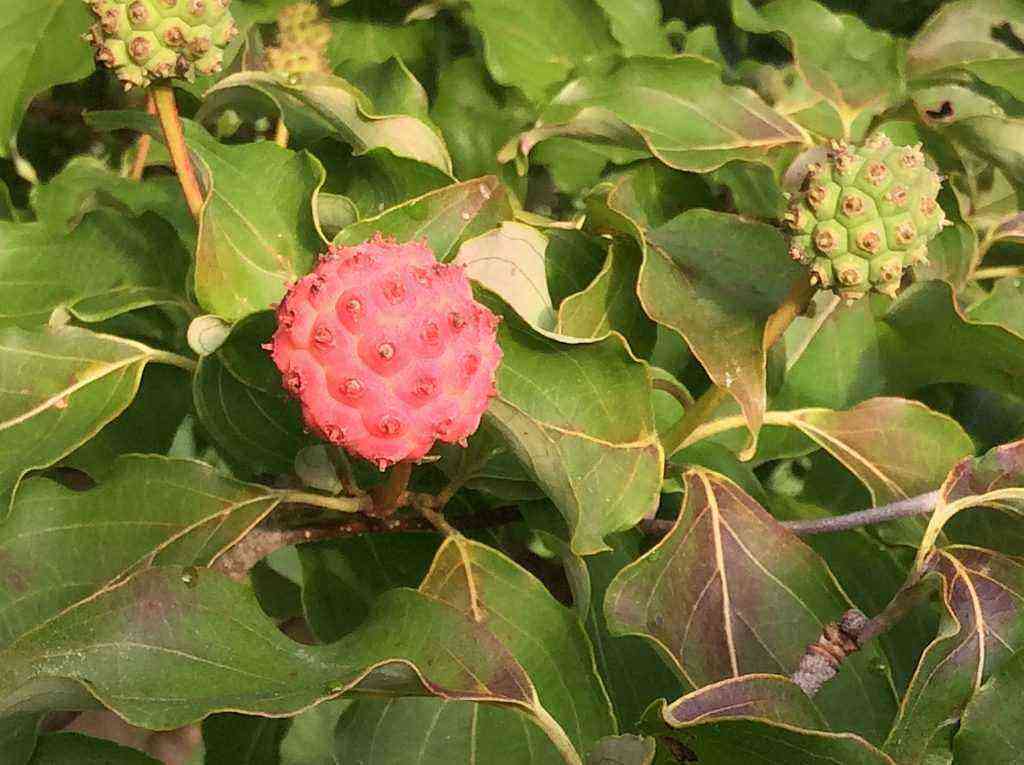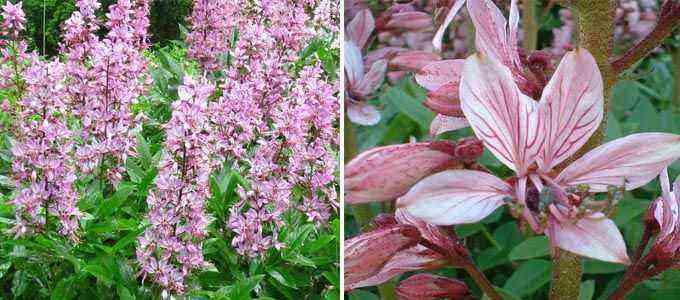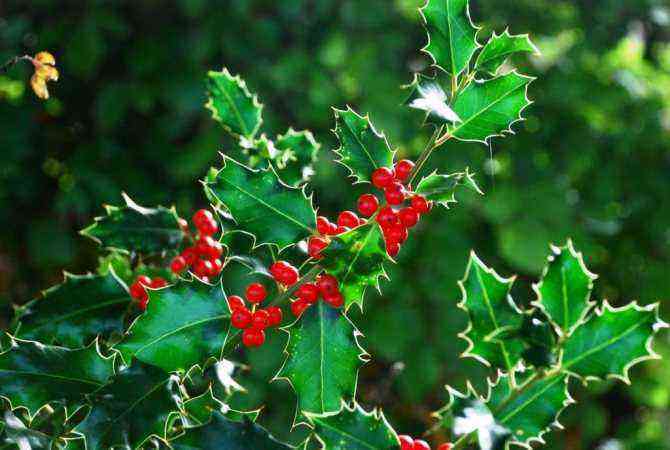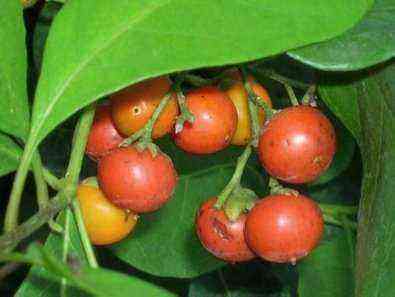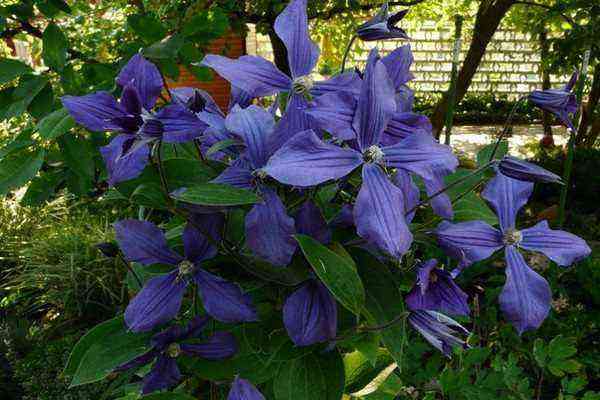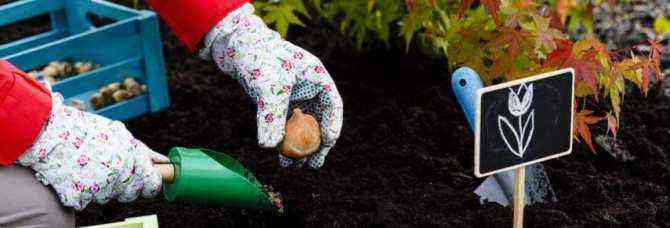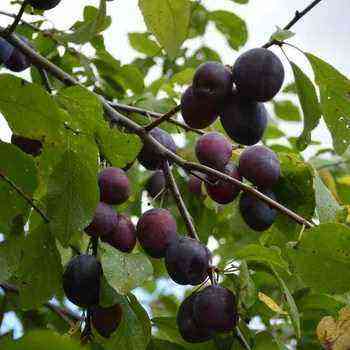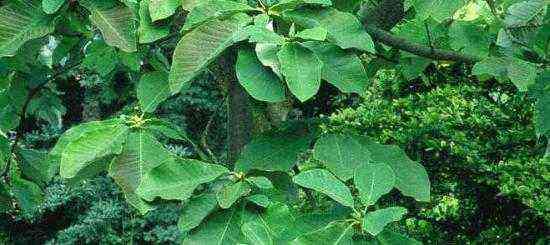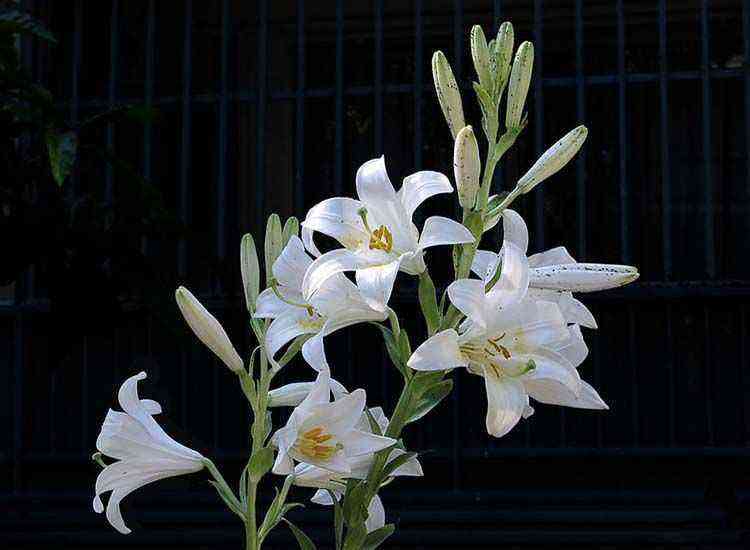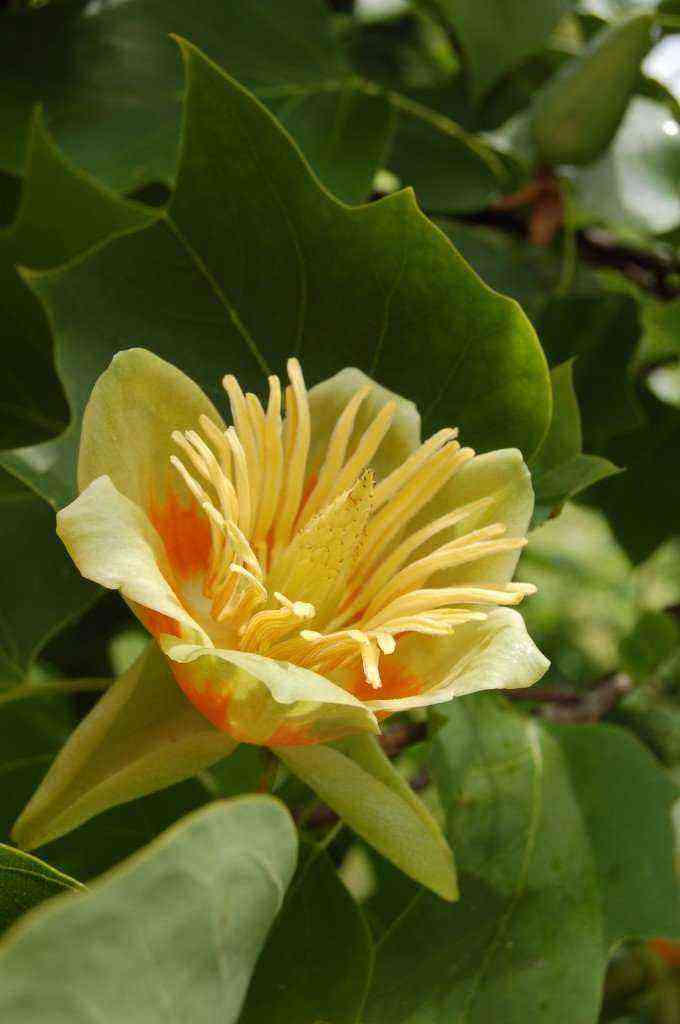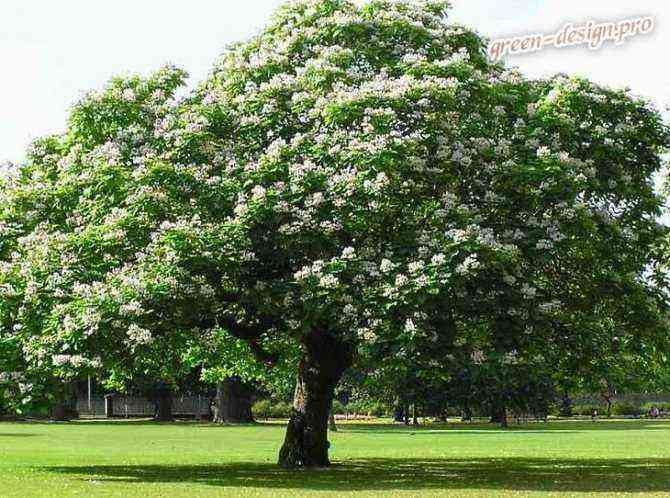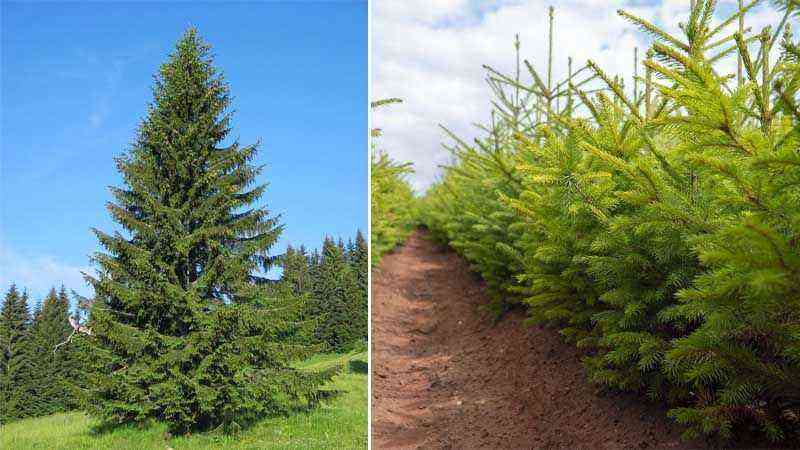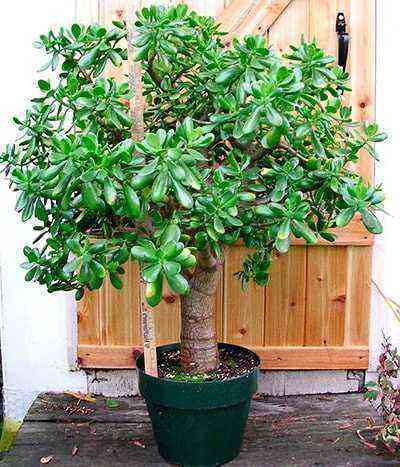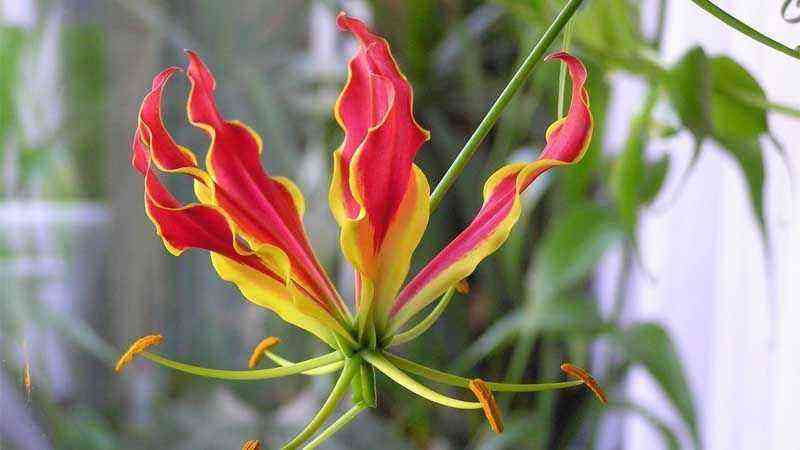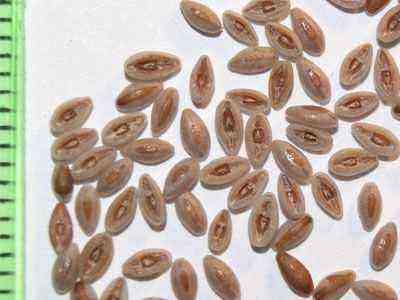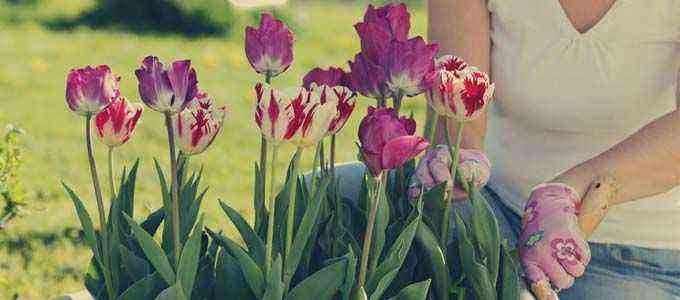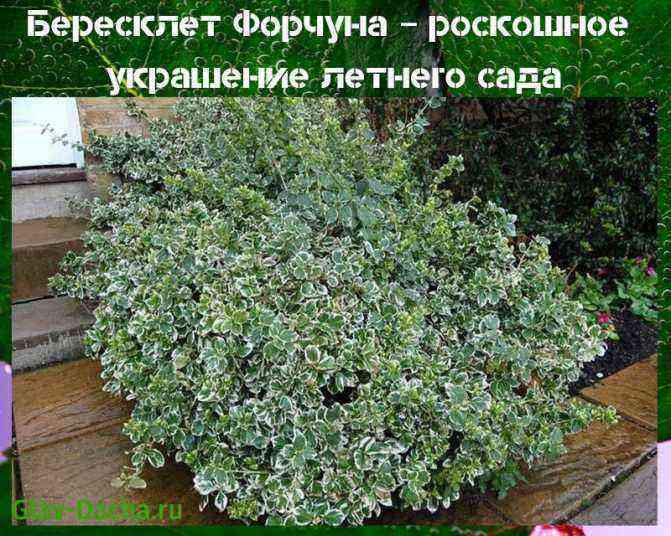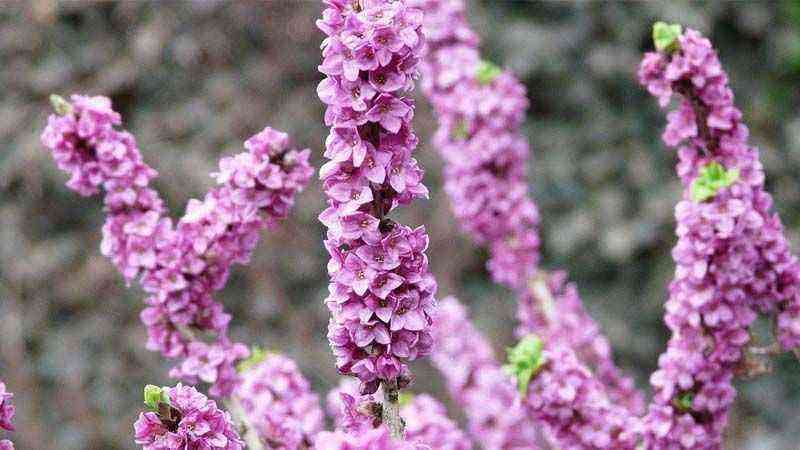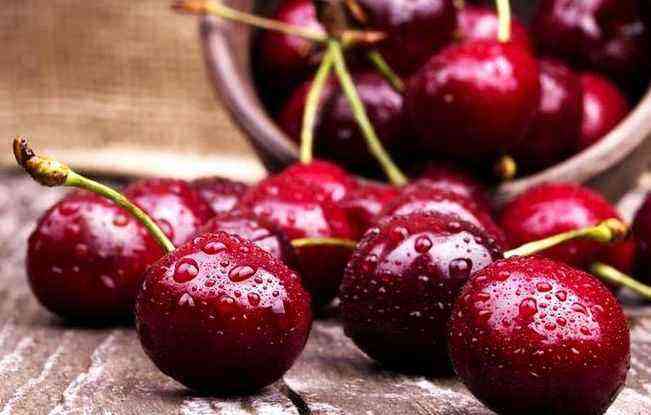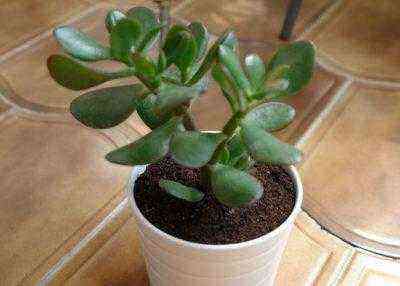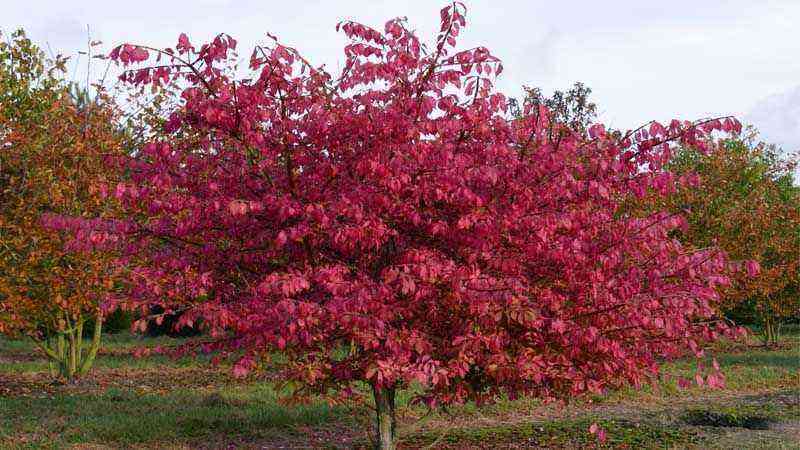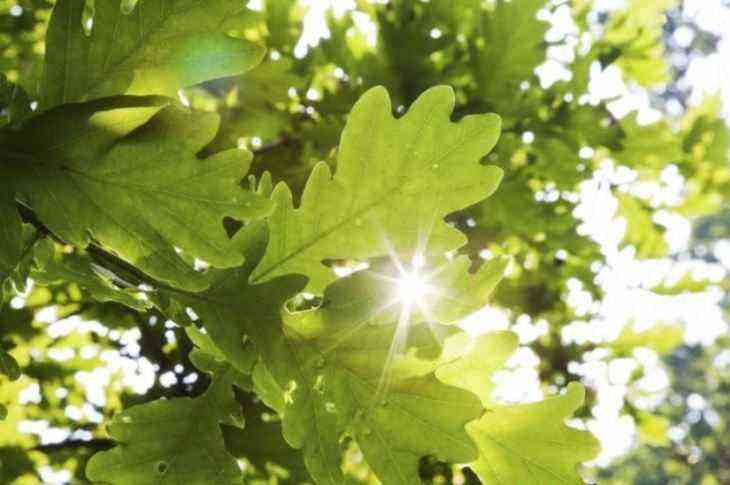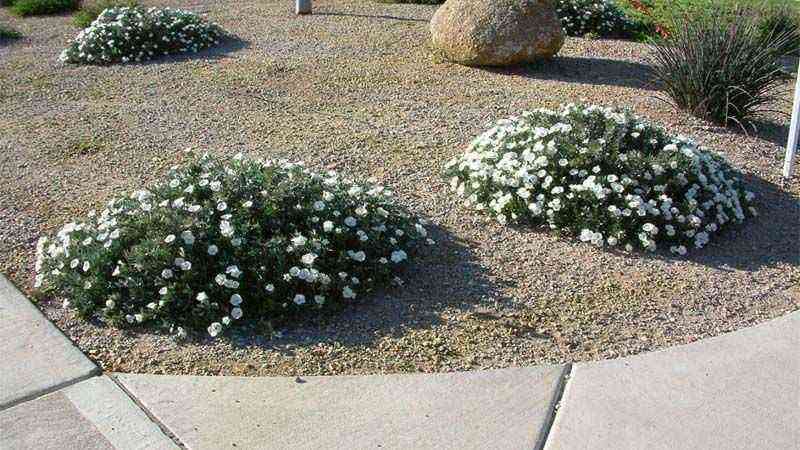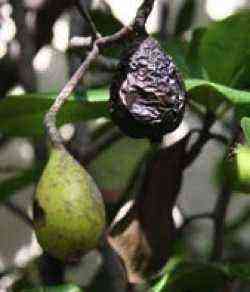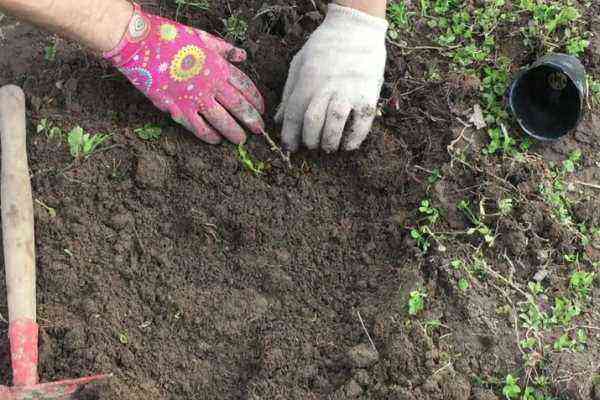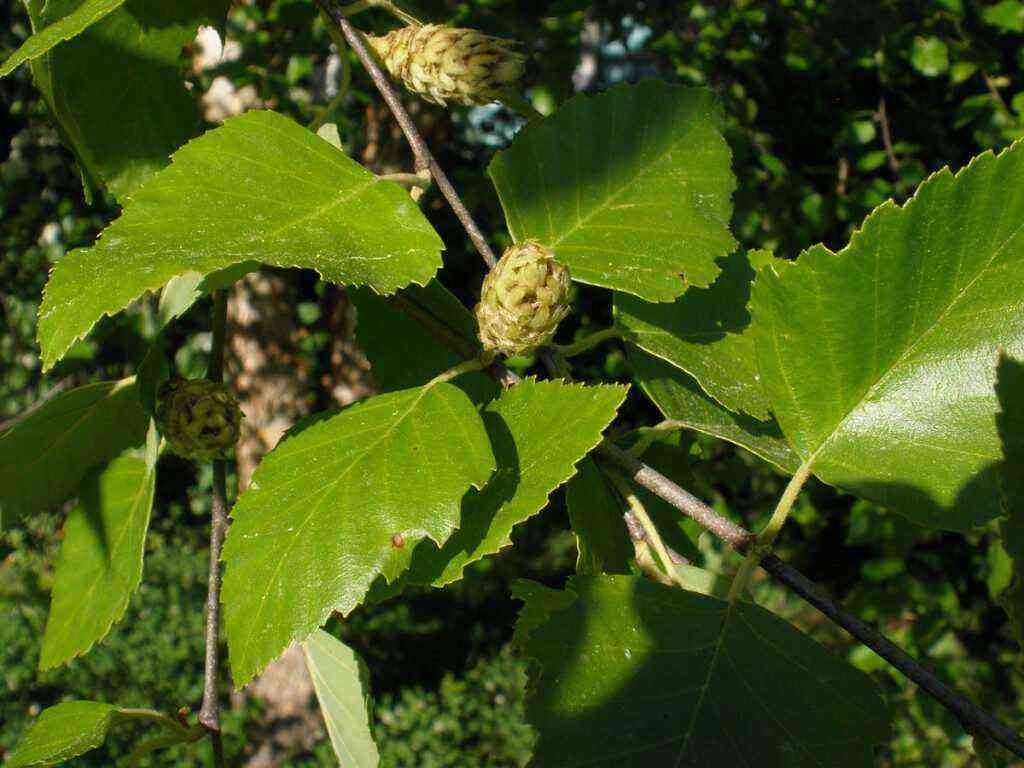Raspberry tree – what is it?
Raspberry trees are popularly nicknamed the standard varieties of culture, which are distinguished by thickened stems. Bushes of such raspberries do not resemble trees at all, but their trunks are stronger, do not droop. With a certain type of pruning, you can achieve that the standard raspberry will look like a small tree.
Among the benefits of the raspberry tree are:
• unpretentious care; • the raspberry tree does not thicken, since the root growth is formed very little; • increased productivity due to a large number of side shoots; • berries are large, well stored, contain few seeds; • tall bushes facilitate harvesting; • strong trunks do not break under the force of winds and the weight of ripe berries; • cold resistance – berries from some varieties can be harvested until late autumn.
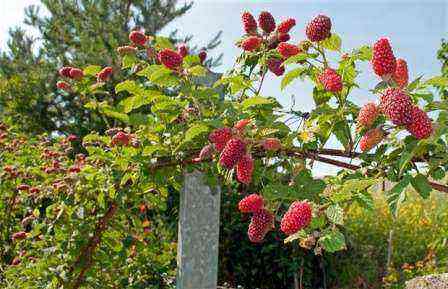

However, in addition to the advantages, gardeners also note one significant drawback of the raspberry tree. According to their observations, the berries from such bushes do not have such a pleasant taste and aroma as the berries of ordinary raspberries. Do not forget that much depends on the composition of the soil, the amount of moisture and the sun.
At the end of the brief description of the standard raspberry varieties, let us name the most beloved by gardeners: “Orange Miracle”, “Sun”, “Golden Domes”, “Arbat”, “Krepysh”, “Fairy Tale”. The position of the leader in this list has been occupied by the standard raspberry variety “Tarusa” for several years. Some of the listed varieties of standard raspberries are shown in the photo.

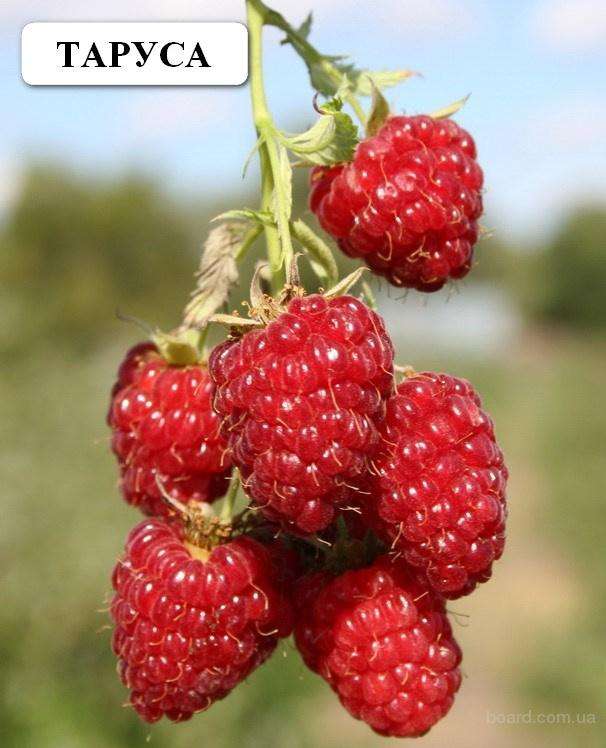
On the photo there are raspberries of the “Tarusa” variety. On the photo there is a raspberry tree “Orange Miracle”
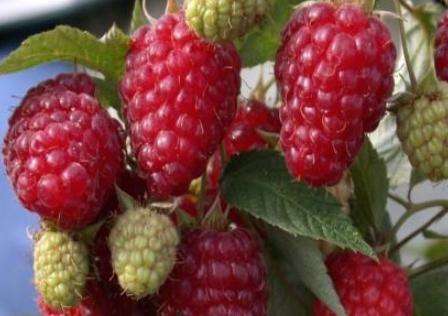

In the photo raspberry “Krepysh”
Top Grades
Three varieties of raspberry trees have gained the most popularity in Russia. Basically, they have similar characteristics, but there are some minor differences:
- Tarusa. The root system of the bush is similar to the rhizome of a tree. This red raspberry tree is quite difficult to propagate, but it makes sense to work hard because of the high yield and large sweet berries.
- Strong guy. It has a well-developed root system, which facilitates the reproduction process.
- Story. This variety is derived from Tarusa, therefore they are similar in many characteristics. There are no thorns on the shoots, the yield is high. Disadvantage: does not tolerate winter cold.
Description of monochromatic fir and its varieties
Planting a raspberry tree
Choosing a place. Like regular raspberries, standard raspberries love sunny places. The soil underneath should be well-drained and fertile. The site before planting seedlings must be fertilized in advance. To do this, use humus, nitroammophoska and ash.
The right time to board. You can plant raspberries in the fall: when the summer heat ends and until the very frost. Most often, planting is done in the spring: in March or April.
Landing. To get a really good harvest from raspberry trees, they need to be planted far enough from each other. So, between the bushes in a row there should be at least 50 cm.Leave a distance of 2-2,5 m between the rows.When planting, you should not deeply deepen the root collar of the seedling – it is permissible to submerge only 2-3 cm under the ground.After planting, the shoots are usually cut off, leaving only 30 cm.
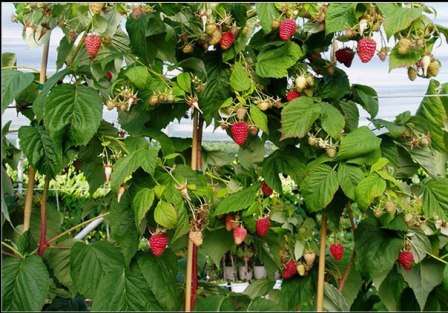

Care features:
• Mulching. This is a very important event, since the roots of raspberries are located close to the surface, and therefore dry out quickly. Shallow roots also make loosening and weeding more difficult, and mulching avoids the need for these activities. • Top dressing. Raspberries respond well to spring fertilization with manure and chicken droppings. Usually the substance is applied under the first layer of mulch or before re-mulching. • Fight against disease. A proven method to protect raspberry bushes from pathogens is to spray them with Bordeaux liquid. Prepare a 3% solution in early summer, and a 1% solution before flowering. • Watering. Especially demanding standard raspberry for watering during the formation and ripening of berries. During this period, watering is carried out at least once a week. • Shelter for the winter. In regions with harsh winters, raspberries are prepared for this period by bending them to the ground and covering them with agrofibre. • Cropping. All dried and frozen shoots must be cut in early spring. Also, in the fall of the standard raspberry, the sprouted shoots are cut off. By the way, it is after this procedure that the bush actually looks like a tree.
Crimson tree formation
The raspberry tree requires a special approach to pruning from gardeners. Experienced agronomists suggest pruning standard raspberries in two stages:
• At the end of the first spring, after planting raspberries, shorten the shoots by 5-10 cm. This will achieve the formation of a large number of fruiting branches. • The following spring, cut off the branches formed as a result of the previous pinching by 15 cm. This is how third-order shoots are formed.

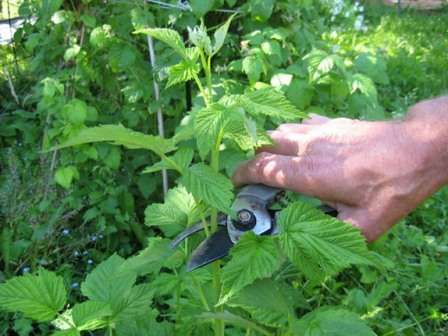
Naturally, after winter, spoiled shoots should be removed, and in summer and autumn, cut off all those that bear fruit.
Reproduction of standard raspberries
There are two ways to increase the number of raspberry bushes in your area:
1.growth; 2. by cuttings.
It is quite rare to apply the first method, since the standard raspberry dates a small amount of root growth. Nevertheless, this method is the simplest and most popular. You just need to dig up the root sprout of the raspberry bush along with the root section, and immediately plant it. Root growth can be stimulated. To do this, all the shoots on the bush must be cut to the ground.
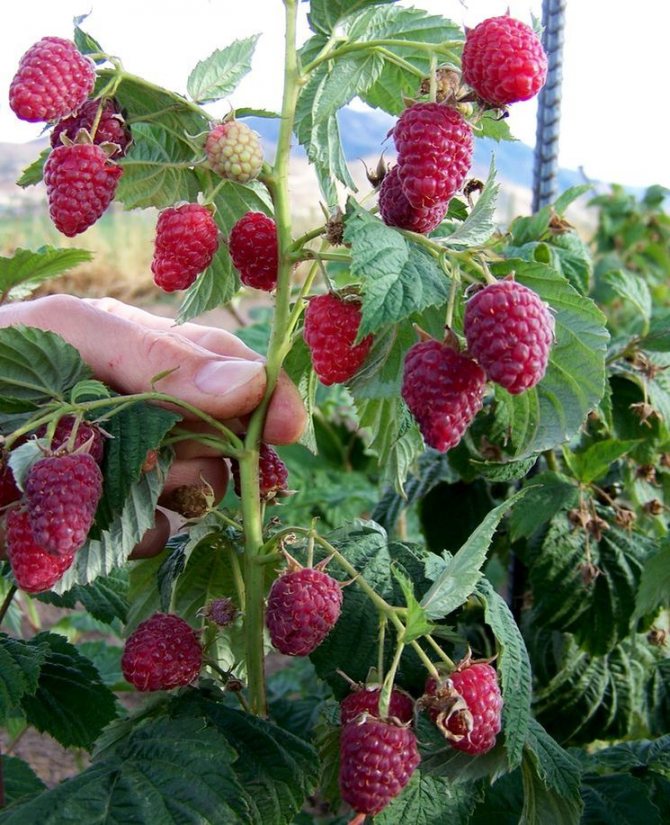
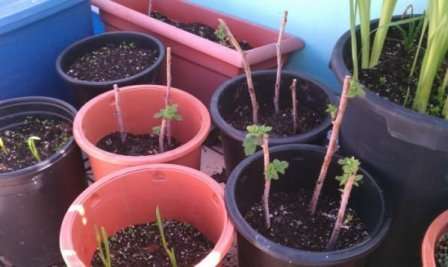
In the photo, raspberry propagation by cuttings
Cuttings are another breeding method for the raspberry tree. In this case, the bush must be dug up, and parts of the roots with 1-2 buds on each must be separated. Further, in a peat-sandy substrate, they are germinated and rooted. The seedlings will be ready for planting next year.
Many gardeners have appreciated the benefits of the raspberry tree. Planting and care, photos, reproduction – we have shared all this with you so that you can also appreciate the merits of the considered variety of the beloved by many shrubs. Standard raspberries are a great opportunity to get more berries with less effort.
How to grow a raspberry tree?
Features of planting a plant
This process is not associated with any serious problems. The main condition is to comply with all the standard requirements for a raspberry tree regarding planting and care, reproduction, selection of seedlings, and determining a suitable place for a raspberry tree.
Selection of seedlings
The most undesirable way when looking for seedlings is to contact private sellers in the markets. There is always a risk that an inexperienced summer resident under the guise of a standard variety will be sold overgrowth from abandoned plots. From a small plant, you cannot immediately determine which raspberry it is – common or standard. Therefore, when choosing planting material, you should adhere to the following recommendations:
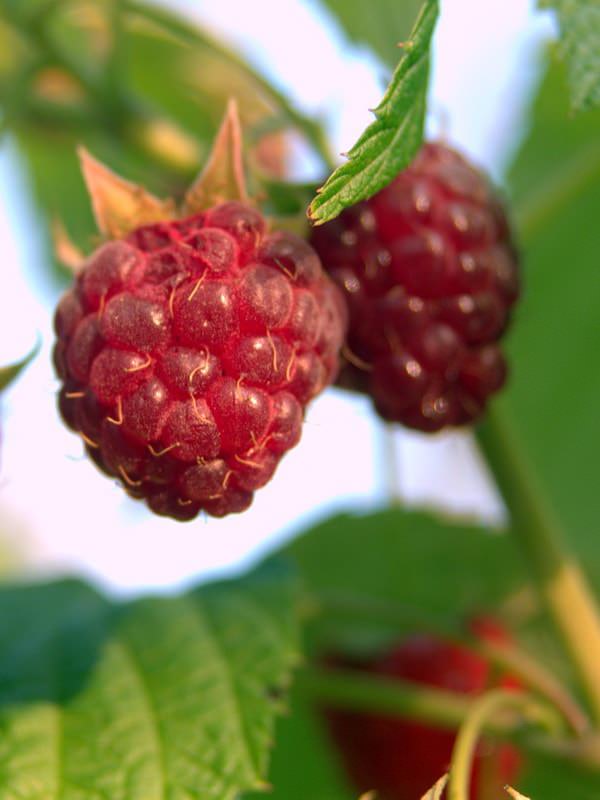
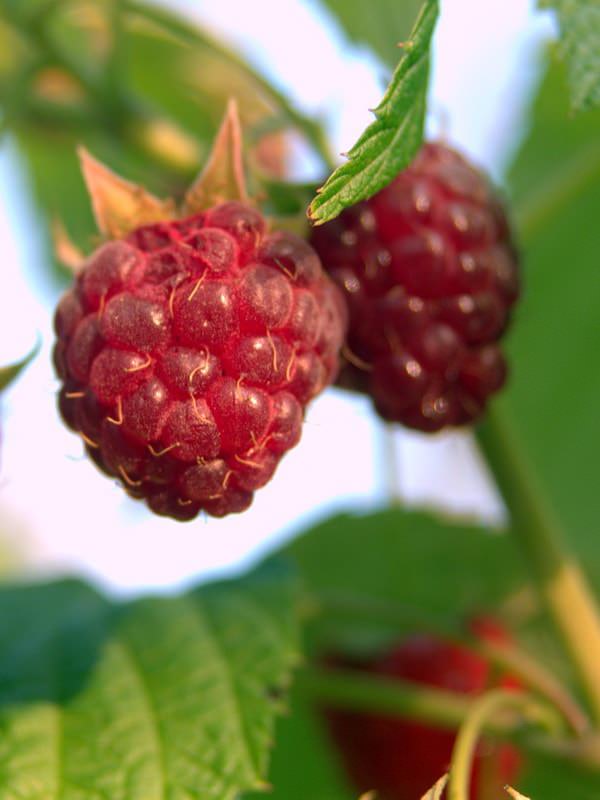
It is best to buy seedlings in specialized stores or gardening nurseries, where the plants are offered without any deception. Nevertheless, the check must be kept.- If in some locality there are no such shops and nurseries, you still have to visit the market. But when buying seedlings, you should demand from the seller a certificate for plants, which indicates the variety and nursery where the seedlings were grown. In addition, there must be a permit to trade the planting material.
- You should not be tempted by a cheap product that is unlikely to please with quality.
- The seedlings should look healthy, free from damage and any stains. These are plants with strong moist roots, several elastic stems, three buds at the base of the shoot. Only such seedlings will root well in a new place and will develop as expected.
- It is necessary to pay attention to how the root system is packed: it should not be wrapped in polyethylene. Only paper or cloth can be used as packaging.
Description of the harm and benefits of the North American ash-leaved maple
Terms of planting works
For seedlings grown in the greenhouse conditions of the nursery, early spring planting is not recommended. For the plant to adapt easily, you should wait for the end of return frosts and plant raspberries in June.
For planting material grown in other ways, spring and autumn are equally suitable. This also applies to the raspberry tree. Spring planting is possible as soon as the snow melts and the ground thaws a little. As a rule, this is the second half of April. Planting a raspberry tree in the fall is usually timed to the end of September – early October. But at the same time, you should immediately protect the plant from early frosts: spud the bush by about 15 cm.
A suitable place for a raspberry tree
The choice of a site where raspberry bushes can grow and develop well is a responsible matter. All raspberry varieties have the following requirements for their permanent place:
- The most suitable soils are loamy or sandy loam, with low acidity. To fulfill this condition, before planting, it is necessary to scatter over the site, and then dig up 0,5 kg of lime with the ground for each square meter of the site. This will help the roots get the nutrients they need. In the future, such a procedure is required every five years.
- Groundwater should lie no closer than one and a half meters, otherwise the roots of plants can rot.
- Neighbors of raspberry bushes should not be tomatoes, potatoes or strawberries. The fact is that raspberries and these crops are prone to the same diseases.
- After 8 years, the raspberry tree should be moved to another place, and the former will be suitable for growing berries no earlier than five years later.
Standard raspberry reacts poorly to lack of sunlight, this significantly reduces its yield.
The main stage
These varieties of sweet berries grow in one place for about ten years. Therefore, it is necessary to plant taking into account the convenient care of them. Raspberry tree bushes are placed in rows at a distance of one and a half to two meters. Before planting, the seedlings should be shortened to 70 cm, and if planting occurs in autumn, remove most of the leaves from them.
The planting process itself looks like this:
- holes are dug up to a depth of 30-40 cm, 20 g of nitrophosphate is poured into each and thoroughly mixed with the ground;
- once again inspect the planting material so that there is no damage on the roots and trunks, at the same time they shorten long roots, remove rotten and dry ones;
- one or two seedlings are lowered into the pits, deepening the root collars by 3 cm;
- the soil under the tree is loosened and immediately mulched;
- all seedlings are watered abundantly.
Italian pinia pine, properties of pinus pinea seeds
Growing standard raspberries
Standard raspberries can be planted in the spring, from late March to mid-April, or in autumn, subject to snowy winters (from mid-September to the second half of October). Consider the following factors when preparing your site:
- any raspberry loves the sun and the absence of drafts;
- the soil should be non-acidic, loose and nutritious, avoid excessively wet places;
- the depth of the hole is adjusted to the size of the rhizome, do not deepen the seedling, the bush should be located in the hole only 2 or 3 cm deeper than before;
- the standard width of the hole is 50 × 50 cm, the distance between the bushes should be about 1 m, and between the rows about 2 m each. Such a large indent is needed so that massive, fluffy bushes receive full sunlight;
- standard raspberries can be planted in a tape manner, for this a long trench 50 cm wide and deep is prepared, the distance between the bushes is 40 cm;
- roots, for better survival, you can dip it in a mixture of clay talker and a small amount of mullein solution;
- for spring planting of standard raspberries, the site is prepared in autumn, and for autumn planting of seedlings – in a month and a half. A nutrient layer based on ash, sawdust, peat and humus should be poured at the bottom of the planting pit or trench;
- after planting, mulch the land around with organic matter and water – at least 5 liters of water under the bush;
- when planting in autumn, it is necessary to spud the lower buds of the plant.
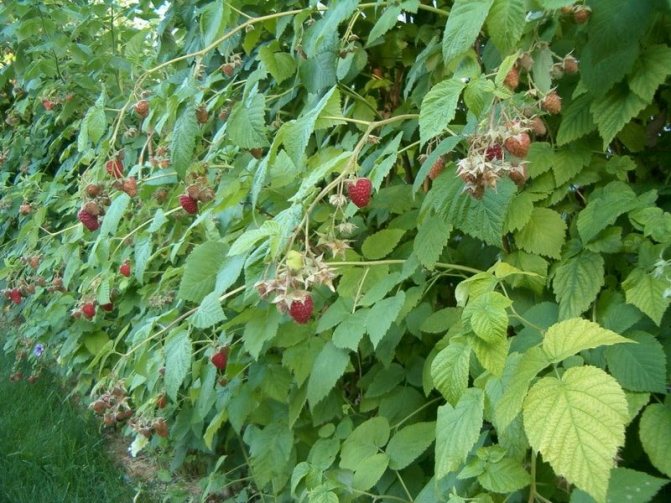
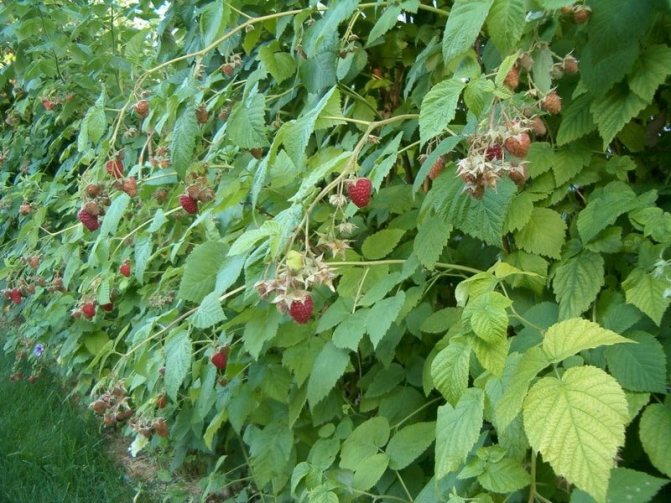
Any culture, especially a highly productive one, needs proper agricultural technology. We list the most important nuances of caring for a raspberry tree:
- standard raspberries are more resistant to diseases and pests, but preventive spraying will never be superfluous – antifungal sprays are carried out before the first wave of flowering and in the second half of autumn, and from pests in mid-May. Choose natural products and strictly follow the instructions;
- in the summer, during the maturation of the drupes, watering is carried out once a week, at least 5 liters of water under one bush. Focus on the weather, excessive soil moisture can harm the roots;
- feeding is carried out in spring and autumn (early September), while it is advisable to use organic fertilizers (as you might have guessed, to enrich the soil biota);
- shoots form around the bushes throughout the season – remove them, and also mulch the soil around the bushes abundantly so as not to follow the weeds.
We have a huge experience in growing raspberries, about 40 years. During this time, we have tried all sorts of varieties. And, of course, they did not react to the marketing ploy about the raspberry tree for a long time. But in our massif the “witch’s broom” got angry and mowed down the old tasty varieties. At the same time, we noticed that this infection did not spread to the studless blackberry. So they decided to take the studless raspberry, and at that time they managed to find Glen Ample. Over these 3 years, I certainly liked its 3 qualities – thornlessness, disease resistance and winter hardiness. On the palate, it strongly resembles Belostvolka – juicy, with a pronounced sourness.
Methods of reproduction
The tree-like red raspberry multiplies easily and takes root quickly with proper care. This process can be done in two ways:
- root cuttings;
- division of the bush.
Cutting method
An adult compact tree is slightly undermined, cuttings at least 10 cm long are separated from it. In this case, each cuttings should have two or three buds. You cannot take more than four cuttings at the same time, as this can weaken the mother bush.
The second stage is the germination of roots, which are buried to a depth of 5 cm, watered with one liter of water on each cutting and cover the planting with plastic wrap. As soon as the first shoots appear, the film is removed.
You can do it differently: tie in bunches of 2-3 cuttings, put them in shallow boxes and sprinkle with a mixture of equal amounts of sand and peat. In this form, they are stored in a cool basement until spring.
In April, the sprouted seedlings are assigned to a permanent place, observing all the rules of the traditional planting of raspberries.
Division of the bush
Some varieties give little root growth. Then in spring or autumn, reproduction is carried out by dividing an adult, but rather young bush:
- a plant not younger than three years old is carefully undermined and taken out together with the root system to the surface;
- the bush is divided into several parts, each of which has three strong shoots and developed roots;
- each part is planted in prepared pits.
What is “Raspberry Tree”?
Let’s say right away – there is no raspberry tree, in fact, we are talking about the standard raspberry of the remontant variety of Tarusa, the branches of which are distinguished by denser wood, erect, without drooping top. The first varieties of such a standard raspberry were bred at the Moscow Institute of Horticulture (VSTISP) in 1987 by Professor V.V. Kichina. And nowadays Gulenin Mikhail Vasilyevich is successfully working in this direction.
Standard raspberry “Tarusa”
Initially, by breeding and crossing raspberry varieties on the basis of the Stolichnaya variety, as a result of such breeding work, the so-called “raspberry tree” “Tarusa” was obtained, with which some people associate a breakthrough in domestic breeding in raspberry growing. Later, at the end of the 90s, the Krepysh variety appeared, and at the beginning of the XNUMXs, a new variety of standard raspberries, Skazka, entered the seedling market. All these varieties of standard raspberries are remontant and in the southern regions of Russia begin to bear fruit from the second decade of June to mid-July, and again: from August to late autumn.
The shoots of the standard raspberry (raspberry tree) are stocky, erect, with a non-sinking top, resembling one and a half meter trees in their appearance. This makes it possible to grow them without trellis supports and garters (sellers insist that this is a noticeable saving of money), and to breed them in whole plantations in the field. In addition, fruit buds are located literally 1-2 centimeters along the stem of the “raspberry tree”, which makes the flowering branches of such raspberries look beautiful and add to them similarities to a tree.
Standard raspberry varieties “Fairy Tale” and “Krepysh”
Raspberry berries of varieties “Krepysh” and “Fairy Tale” differ from “Tarusa” in rich ruby color and size, have an original conical shape, weigh from 4 to 10 grams. When ripe, they are easily removed during harvesting and transported safely. Berries of the Tarusa variety are bright red and weigh from 4 to 8 grams.
Standard raspberry “Eurasia”
Received for the first time in Russia on the breeding base of VSTISP (All-Russian Institute of Selection and Technology for Horticulture and Nursery) in 1994 by scientists S.N. Evdokimenko and V.L. Kulagina, the remontant variety “Eurasia” has been widely used since 2005 in the practice of domestic gardening.
Standard raspberry variety “Eurasia” is characterized by erect shoots, reaching 1,2 meters, large berries of dark raspberry color (4-5 grams), conical shape. Fruiting begins at the end of July, and lasts for the next two months. At the end of autumn, a bush of such a raspberry is cut to ground level.
Standard raspberry “Penguin”
The new remontant variety of raspberries “Penguin” was bred by the same selection group of VSTISP scientists, it is distinguished by the possibility of both manual and machine assembly, and is similar to its standard predecessors. Branches are not lying, erect, 1,1-1,3 meters high.
The berries are round-conical in shape, dense and large: from 4 to 5 grams, dark raspberry color. Its attractive feature is reliable transportability and keeping quality. Ripe berries can be qualitatively preserved on the branches for five days. Amicable fruiting of this variety lasts from mid-July to the end of August, and in the southern regions – from October to clear cold weather.
Species and varieties
Raspberries, growing in the form of a full-fledged tree, do not yet exist in nature, just as there is no climbing strawberry. Thanks to the selection, Professor V.V. managed to create a variety with a very strong stem, and even a tree from it creates a gardener with the correct formation. The varieties known as crimson trees are more correctly called standard trees. Simultaneously with Kichina, Professor Kazakov also worked on the development of standard varieties. He managed to get standard remontant varieties.
- Tarusa. This is the first standard variety bred by Viktor Valerianovich Kichina. Shoots are low – up to 1,5 m. Fruiting in medium late periods.
- Advantages: large – up to 16 g of berries, high – up to 4 kg per bush yield, no thorns, strong stem.
- Disadvantages: sour taste of berries, insufficient frost resistance – up to -30 degrees. The sprouting ability of the Tarusa raspberry tree is weak – there are enough shoots to replace the fruiting trunks, there may be problems with reproduction.
- Mighty… The variety has tastier berries than Tarusa. But their value is less – up to 8 g, respectively, slightly less and the yield – up to 3,5 kg per bush. The frost resistance of the variety is at the level of Tarusa. But the sprouting ability is much greater, it is easy to propagate this variety. Bears fruit in the mid-term. The berries ripen unevenly and must be picked frequently. They are well transported.
- Fairy tale. Ripening period – medium, extended fruiting. The shoots are high – up to 2,5 m. The berries are not inferior in size to Tarusa – up to 15 g, but the yield is much higher – up to 10 kg per bush. The taste is good with a high sugar content. The weak point is low frost resistance of -25 degrees for it, the limit, and bending down the standard variety for wintering under cover is a thankless task.
- Eurasia – the first grade of standard raspberry with remontant fruiting. The height of the shoots is 1, 7 m. Frost resistance in this case does not matter, the shoots are cut at the root in the fall. The variety is distinguished by moderate shoots, which is more a plus than a minus: this raspberry will not creep in all directions. The berries of Eurasia ripen in early August, and until the end of September, it fully yields. The berries are large – up to 6,5 g of a beautiful dark raspberry color. Their tasting score is 3,9 points, probably due to a noticeable sourness, but it accumulates vitamin C up to 35 mg. The advantages of the variety include excellent yield – up to 6 kg per bush and transportability of berries. The ability to be stored for several days without loss of consumer qualities is rarely seen.
- Penguin. The shoots are low – up to 1,5 m. Medium-sized berries – up to 5 g, as well as the yield – 2,5 kg. The flavor of the berries is highly dependent on the type of soil and weather. Frost resistance up to -26 degrees, but this is not important for a remontant variety. Fruiting from early August until frost.
Features of growing standard raspberries
First, to grow standard raspberries you need full daylight sunlight, which can be achieved by placing rows of raspberry bushes when planting from south to north in your garden area.
- The growing soil must be well-drained and fertile;
- soil fertility is formed no later than 1 month before planting, when 60 buckets of humus, 2 grams of nitroammophoska and a glass of ash per 150 running meter are introduced into the prepared landing strip, 1 centimeters wide. It is recommended to dig up such soil for 1 bayonet with a shovel or a motor-cultivator;
- best planting dates: from mid-September to late autumn; in spring – from early March to late April, and with mild winters in the southern regions – even in winter;
- when planting, the bushes are placed in one line with an interval of 50 centimeters. 1 tablespoon of nitroammophos is added to the landing hole.
Diseases and pests of standard raspberries
With all diseases of standard raspberries, fungal and bacterial, it is better to fight prophylactically. For this reason, in the spring, it is advisable to treat raspberries with a 10% solution of Bordeaux liquid, and before flowering, in May, with a 10% solution of Bordeaux liquid or topaz (XNUMX milliliters per XNUMX liters of water).


Raspberry stem fly (mosquito) and gall midge inflict destructive harm to crops and branches. To successfully fight it, you need to remember that its emergence for laying eggs in the axils of the upper young shoots occurs in the second decade of May. A larva emerges from these eggs rather quickly, which gnaws at itself an internal passage down the stem, feeding on the sap of young branches. In the place where it prepares to exit from the core of the stem, a tumor-like thickening appears – gall.
If you do a regular inspection of the raspberry tree, then at the first signs of wilting of the crown, you need to examine the entire stem completely, find a galla and immediately and mercilessly cut off the entire branch just below the galla that appears and burn immediately, which, possibly, prevent the caterpillar from emerging to pupate in the warm upper layer soil. If this is done early, a 10 mm flat white larva with a brown head can be found when the gall breaks. Those larvae that manage to get out for pupation will have to overwinter in fallen leaves and in the upper soil layer.
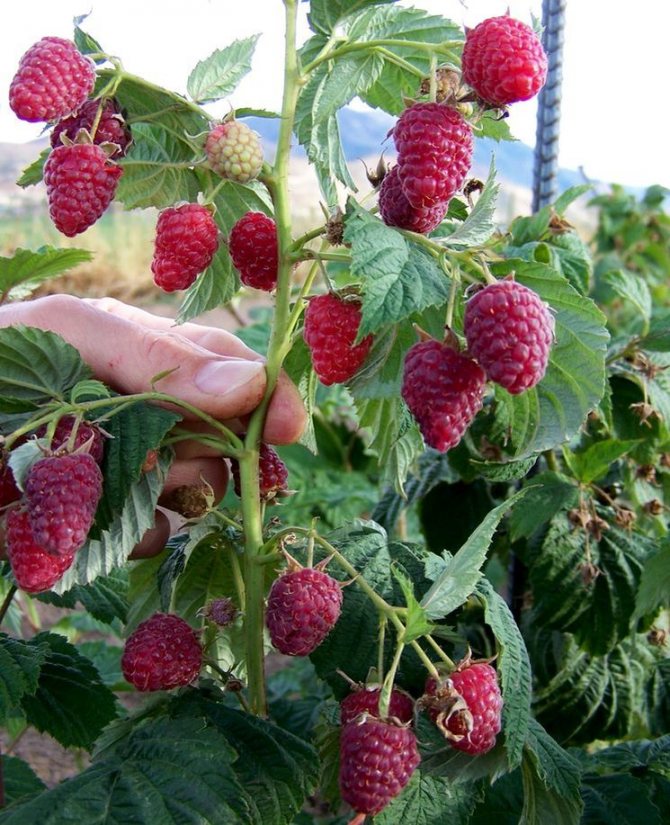

For this reason, sweep all the fallen leaves from the raspberry plantation to a single one, and in the cool time of late autumn, dig it up in order to cause significant damage to the future population of the gallfly fly. In order to combat this pest, in the fall, they cut the stems of standard raspberries completely to the ground.
In the conditions of summer cottage cultivation of raspberries, it is quite difficult to fight this pest, because not all gardeners fight it carefully and amicably, and then gall midge flies from negligent neighbors fly into your well-groomed area. In this case, you cannot do without a thorough examination and operational measures.
Special insecticides are effective in the fight against gall midge, with aqueous solutions of which, following the rules of the attached instructions, it is necessary to spray the young shoots of raspberries twice approximately on May 10 and 20. Aktelik or Bi-58, diluted in 10 liters of 15 milliliters of the drug, to some extent cope with the raid of the gall midge. Success can be consolidated by spraying at the end of June, during the release of the second generation of gall midge, if this period coincides with a break in fruiting. All of these insecticides are harmful to bees and humans, which suggests protective measures for the gardener and the timing of spraying is always in dry weather and better in the evening.
Fertilizers for feeding stock raspberries
In early spring, it is advisable to feed the “raspberry tree” with a solution of urea in a dilution of 50 grams of granules per 10 liters of water per 3 bushes. Organic feeding with infusion of bird droppings or mullein is also possible. Before flowering – in early May, it is good to feed with an aqueous solution of nitroammofoska or nutrivant drip (2 tablespoons per 10 liters of water for three bushes).


Good results are shown by monthly foliar feeding on foliage from the beginning of budding with solutions of multi-microelements: “Ryazanochka for berry crops” (for 10 liters of water, 1 teaspoon of the product) or “Nutrivant plus fruit” (for 10 liters of water, 2 tablespoons of the product). There is a very useful anti-stress drug “Aminokat 30%”, which is used for spraying stock raspberries in unfavorable weather conditions: late frosts, heat and sunburn, with mechanical damage to branches.

